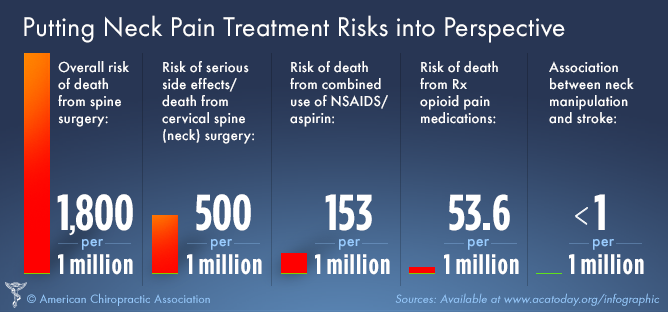Comparing Acupuncture To Other Discomfort Management Techniques
Comparing Acupuncture To Other Discomfort Management Techniques
Blog Article
Content By-Perkins Lester
When you think about discomfort monitoring options, you could find yourself weighing the pros and cons of numerous strategies, including acupuncture, non-prescription drugs, and physical therapy. While many methods provide relief, they commonly feature their own set of difficulties, like adverse effects or lengthy treatment times. Acupuncture stands apart for its special capability to promote self-regulation with less dangers. But how does its efficiency contrast to even more traditional methods? The nuances of these techniques can substantially influence your choices, and exploring them better might lead to unexpected understandings.
Introduction of Pain Management Techniques
When it involves handling pain, you have a variety of methods at hand. These methods can vary from traditional approaches to more different therapies. Understanding your choices is crucial in discovering what works best for you.
One usual method is over the counter medications like advil or acetaminophen, which can give quick relief for light to moderate pain. Prescription drugs, consisting of opioids, might be essential for much more extreme pain, though they feature threats of dependence and adverse effects.
Physical therapy is another effective strategy, concentrating on exercises and stretches to reinforce muscle mass and improve wheelchair. This technique often aids in taking care of persistent discomfort conditions.
Furthermore, some people turn to more all natural alternatives, such as massage treatment, which can reduce stress and improve circulation.
Mind-body techniques, like mindfulness meditation or yoga exercise, help you take care of pain by minimizing anxiety and improving your mental strength.
Lastly, way of life modifications, such as preserving a healthy and balanced diet regimen and routine exercise, can play an essential role in general discomfort monitoring. Each strategy has its advantages and disadvantages, so it's important to discover what fits your demands and choices best.
Benefits of Acupuncture
Acupuncture uses an one-of-a-kind technique to pain administration that sticks out among numerous techniques. By targeting particular points on your body, it promotes the circulation of power, or "qi," promoting all-natural recovery and reducing pain.
Among the biggest advantages is its minimal side effects. Unlike some medications, which can lead to dependency or unwanted wellness problems, acupuncture is a holistic treatment that motivates your body's self-regulation.
You'll likely find that acupuncture sessions can aid ease persistent discomfort, migraines, and even stress and anxiety. Lots of people experience a feeling of relaxation and health throughout and after therapy, which can improve overall quality of life.
And also, it's a flexible option; it can be utilized along with other treatments, making it a terrific enhance to your existing discomfort management strategy.
Another significant advantage is that acupuncture can be customized to your details demands. Your specialist will examine your condition and develop an individualized therapy strategy, ensuring you receive the care that finest sustains your recuperation.
With its old origins and expanding approval in modern-day medication, acupuncture stands out as a compelling choice for discomfort relief.
Contrasting Efficiency and Outcomes
Discomfort administration strategies vary widely in their effectiveness and outcomes, making it vital to recognize how they stack up against one another. When thinking about alternatives like acupuncture, physical therapy, and medicine, you'll find unique distinctions in how each technique addresses discomfort.
Acupuncture, for example, usually supplies relief for chronic pain problems, with researches showing substantial renovations suffering levels for numerous patients.
On the other hand, drugs like opioids can successfully take care of sharp pain yet lug threats of reliance and adverse effects.
Physical therapy focuses on rehabilitation and might take longer to show results, which can be frustrating if you need prompt alleviation.
When examining these strategies, consider your particular pain kind and your personal health and wellness goals. Some people locate that a combination of methods works ideal for them.
As an example, you might gain from acupuncture sessions along with physical therapy to optimize healing.
Inevitably, recognizing the effectiveness and end results of each technique will help you make notified choices about your pain management method, enabling you to select the method that finest suits your needs and way of living.
Verdict
In summary, acupuncture stands apart as a valuable choice to conventional pain management techniques. It uses quick alleviation and promotes self-regulation without the risks of dependency connected with medicines. While https://paxtonicwqj.59bloggers.com/33498715/take-into-consideration-the-possibility-that-acupuncture-may-be-the-solution-to-your-migraine-headache-alleviation-discover-important-strategies-that-might-reinvent-your-pain-administration-experience could require more time for outcomes, acupuncture can give immediate advantages, making it an appealing alternative for those seeking relief from persistent discomfort and tension. By incorporating acupuncture into your discomfort monitoring strategy, you can improve your general wellness and recover control over your wellness.
